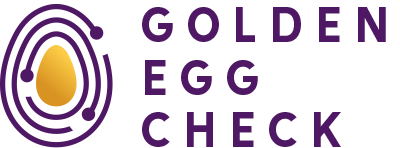Evaluating whether your startup’s innovation has arrived at the right moment requires a multi-faceted assessment approach. Successful timing analysis combines market readiness signals, competitive landscape evaluation, and customer pain point validation. Entrepreneurs must balance being early enough to capture market leadership against the risk of arriving before infrastructure, customer behavior, or regulatory frameworks can support adoption. The process demands both analytical rigor and intuitive judgment to determine if your solution’s moment has truly arrived.
How do you determine if the market is ready for your startup solution?
Market readiness assessment begins with identifying clear signals that indicate genuine demand rather than merely perceived need. The most reliable indicator is the presence of an actively expressed problem among your target customers—people or businesses actively seeking solutions and willing to invest resources to solve their pain points.
Examine competing solutions in the marketplace. Their existence validates market demand, while their limitations reveal opportunity gaps your startup can address. A competitive landscape with multiple players trying different approaches often signals a market reaching maturity and readiness for innovation.
Customer pain points provide crucial insights into market readiness. When potential users consistently articulate the same challenges and express willingness to adopt new approaches, the market likely has the necessary tension for your solution to gain traction.
Adoption trends within adjacent technologies or complementary solutions can also indicate readiness. If customers are embracing innovations that enable or enhance your solution, the groundwork for your market entry may already be established.
What market indicators show your startup solution is relevant?
Market relevance manifests through several qualitative signals. Customer acquisition efficiency provides a telling indicator—when potential users can be acquired through targeted channels, it suggests your solution addresses a recognized need. Increasing difficulty in acquisition might indicate either growing competition or diminishing relevance.
Early user engagement rates offer critical insights. Strong engagement with minimal onboarding friction suggests your solution resonates with actual user needs. Sustained engagement over time, rather than novelty-driven initial interest, indicates genuine relevance.
Willingness to pay stands as perhaps the most definitive relevance indicator. When customers demonstrate readiness to exchange value for your solution—whether through direct payment, data sharing, or significant time investment—you’ve found evidence of relevance.
Feedback patterns from early adopters provide qualitative signals of relevance. When users independently identify and articulate your solution’s primary value proposition, your offering likely aligns with actual market needs rather than assumed ones.
How can you validate your startup’s solution timing without significant investment?
Timing validation doesn’t require substantial capital if approached strategically. Minimum viable product (MVP) testing allows entrepreneurs to gather meaningful market feedback while minimizing development costs. Focus on validating critical assumptions about market needs rather than building comprehensive feature sets.
Customer interviews represent a low-cost yet powerful validation method. Structured conversations with potential users can reveal whether your solution timing aligns with market readiness. Look for consistent patterns across multiple interviews rather than being swayed by individual opinions.
Pre-sales strategies offer direct validation of market timing and willingness to pay. If customers commit resources before your solution is fully developed, you’ve found strong evidence of appropriate timing.
Competitive landscape analysis through publicly available information can indicate timing appropriateness. Funding patterns, expansion activities, and strategic pivots among competitors reveal valuable insights about market readiness without requiring direct investment.
When is a startup solution considered too early for the market?
Innovation that precedes market readiness often encounters specific adoption barriers. Infrastructure limitations represent a common challenge—when your solution requires supporting technologies, networks, or platforms that remain underdeveloped, adoption becomes prohibitively difficult despite your solution’s inherent value.
Behavioral adoption barriers arise when your solution requires significant changes to established user behaviors. Even clearly superior solutions face resistance when users must invest substantial effort in changing entrenched habits or processes.
Regulatory hurdles can render otherwise viable solutions temporarily impractical. When legal frameworks haven’t evolved to accommodate your innovation, market timing may be premature regardless of solution quality.
Education costs provide another timing indicator. When the resources required to educate the market about your solution’s value exceed immediate monetization potential, you may be too early. The market might eventually embrace your approach, but not before substantial groundwork creates the necessary understanding.
What role does customer feedback play in assessing solution relevance?
Effective feedback collection methods form the foundation of relevance assessment. Structured approaches yield more valuable insights than casual conversations. Implement feedback mechanisms at multiple customer journey touchpoints to capture diverse perspectives.
Interpretation frameworks help transform qualitative feedback into actionable insights. Look beyond surface-level comments to identify underlying needs, motivations, and constraints driving customer responses.
Distinguished between nice-to-have versus must-have features through systematic analysis. When customers consistently identify certain aspects as essential rather than merely desirable, you’ve found the core of your solution’s relevance.
Feedback loops should continuously refine your understanding of solution relevance. Establish mechanisms to regularly reassess how well your evolving solution addresses customer needs as market conditions change.
How do investors evaluate the timing and relevance of a startup solution?
Investors assess timing and relevance through specialized frameworks focused on growth potential and risk management. Traction metrics receive particular attention, as demonstrated market uptake provides tangible evidence of appropriate timing and relevance. Most investors prefer seeing some level of market validation before committing significant resources.
Market sizing approaches help investors gauge whether your solution addresses a sufficiently large opportunity to justify investment risk. Both total addressable market (TAM) and serviceable obtainable market (SOM) analyses inform their assessment.
Competitive positioning evaluation reveals how your timing and relevance compare to alternatives. Investors analyze whether your market entry timing provides sustainable competitive advantages or vulnerabilities.
Risk assessment methodologies for early-stage ventures balance timing opportunities against market readiness risks. Investors evaluate whether your solution has arrived at an optimal moment or whether market conditions suggest waiting for greater readiness.
Startup solution assessment: Turning insights into action
A practical framework for synthesizing timing and relevance data helps transform analysis into strategic decisions. Consider creating a structured assessment matrix that weighs market readiness signals against your solution’s current capabilities.
Pivoting considerations should follow naturally from your timing and relevance assessment. When evidence suggests misalignment between your solution and current market conditions, strategic pivots may be necessary to achieve better timing-market fit.
Go-to-market optimization directly responds to timing and relevance insights. Adjust your market entry approach based on your assessment of current market readiness and demonstrated relevance signals.
Resource allocation decisions should reflect your confidence in timing and relevance. Invest more aggressively when multiple indicators suggest optimal market timing, while maintaining flexibility when timing remains uncertain.
Evaluating market readiness requires both analytical rigor and entrepreneurial intuition. By applying a structured approach to startup assessment and understanding investor criteria, you can make confident decisions about when and how to bring your solution to market.




